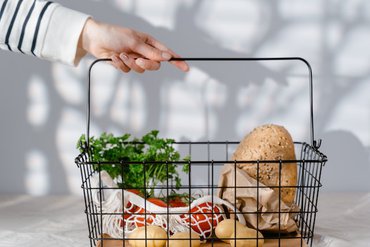Despite inflation’s cooling in 2023 from historic highs the year prior, higher prices continued to impact the way Americans spent during the last 12 months.
Shoppers sought value and convenience which spurred ecommerce, dollar stores, and club stores to grow faster than the traditional food channel early in the year, according to the Impact of Inflation on Consumer Behavior report that Circana released in February.
Shoppers also scaled back on the number of items purchased compared to the year prior.
By May, retail sales revenue from CPG products and general merchandise had increased two percent in dollar sales and fell three percent in unit sales, according to Circana.
“Directional spending shifts, coupled with unemployment elevation, and recent air quality concerns in the U.S. could jolt a significant shift in consumer behavior. But, for the time being, consumers continue [to] seek little luxuries and are willing to pay a premium for most of their purchases,” said Marshal Cohen, chief retail industry advisor for Circana, in a statement, at the time.
Retail sales during the traditional selling peaks of Valentine’s Day, Easter, Mother’s Day, and Father’s Day failed to reach expected levels.
Retail spending was also reduced by about 35 percent by SNAP households after the government dialed back on SNAP eligibility and pandemic relief benefits, according to Circana.
The elimination of extra SNAP benefits reduced food and beverage aid by $23 billion annually.
In October, SFA’s Today’s Specialty Food Consumer research found that the frequency of shopping in-store hadn’t returned to the levels of Jan 2020 due to changing shopper behavior, and likely will not return as online shopping becomes entrenched. Tight budgets, however, caused people who never have groceries delivered to rise from 41 percent to 45 percent, and those who never use click-and-collect to rise from 47 percent to 51 percent.
By November, U.S. retail sales revenue, including discretionary general merchandise and consumer packaged goods, declined 2 percent compared to the same month last year, and unit sales declined 3 percent, according to Circana.
“Consumers have changed the way they are shopping in response to what is going on around them, focusing their shopping energy on getting what they need at a value,” said Circana's Cohen, in a statement. “The combination of continued price elevation, the resulting economic challenges that remain from the past few years, and the absence of newness and purchase urgency at retail have resulted in a more relaxed approach to shopping — even at the holidays.”
Consumers’ uncertainty around how long inflation will last increased significantly in November, compared to their outlook earlier in the year, according to a report from 84.51°, the data research division of Kroger Co.
The trend was seen among all age groups, according to the report, which surveyed consumers who had shopped at Kroger in the previous three months. For example, 19 percent of shoppers aged 18-34 said in November that they believe inflation is here to stay, compared with 11 percent of shoppers that age who said in April that inflation would never end. Even larger increases were seen among shoppers aged 35-54 and those age 55 and older.
Related: Las Vegas Grocery Store Combines Free Food Pantry On Site; DoorDash Provides Relief Grants in Tennessee.

